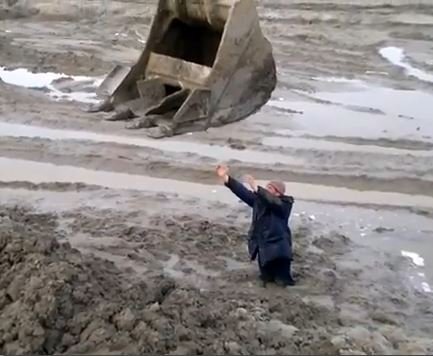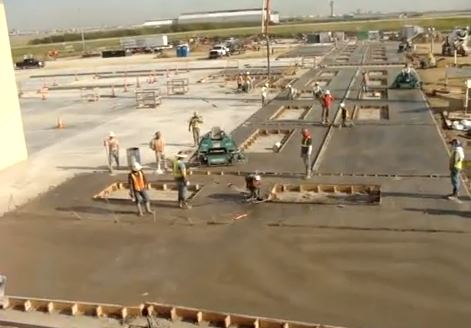This event was held on 11 July 2013 at ARRB offices in Vermont South and was generously sponsored by ARRB
NOTES
Pavement Asset Management Fundamentals, Jon Roberts, Principal Research Engineer- Asset Management
Types of data collected relevant to pavements include:-
- Traffic data
- Climate data
- Drainage data
- Strength data
- Environment
- Road safety
STEP is used to estimate remaining life (structural testing evaluation pavement).
A TDS vehicle is soon to be delivered to ARRB. It is suited to use on long stretches of road and gets best results from travel at 40 to 80 km/hr and will be used on main highways work in the first instance. There is at least one years work booked for the vehicle when it arrives. After that time it can be considered for use on local roads. Possibly another unit may be purchased.
An alternative method for use on local roads to measure strength is the falling weight deflectometer. The deflectograph is best for urban streets and short lengths of road giving results every 100m. The benkelman beam can also be used.
High roughness and cracking in a pavement does not necessarily translate into a low strength pavement
Pavement Performance Modelling and the LRDS, Dr Tim Martin, Chief Scientist – Asset Management
A local roads deterioration study was undertaken between 2002 and2011 including 236 organisations. The results of this study will be presented at the ipwea public works conference in Darwin in August 2013
Selecting an Appropriate Surfacing for Your Needs, Kym Neaylon, National Technical Leader – Pavements and Surfacings
Roughly 90% of Australian road pavements are sprayed seal and 10% are asphalt
Good drainage is the key to a good pavement
Low traffic loading generally have a spray seal pavement whereas high traffic loading generally require an asphalt pavement. However the Hume Hwy is a sprayed seal pavement with high vehicle loading a but here the traffic is not stopping and starting so a spray seal is acceptable.
There are many different surfacing treatments available. Australian roads technical reports explain when best to use each type of surfacing. Here are some rules of thumb
- Single/single sprayed seal 7mm -> 10 mm-> 14 mm Used for light traffic with the stone size increasing as the traffic loading increases which increases the amount of bitumen on the road. Bitumen should be placed 2/3 of the way up the stone.
- Double/ double sprayed seal 10/5 -> 14/7- >14/10
- Polymer modified binder PMB S10E – > S15 E -> S20 E
- Reinforced seal ( bandaid treatments) – fibres -> geo fabric
- Asphaltic concrete ( significant traffic loading) AC7-> AC10 -> AC 14 – > AC 20
Never use a highway mix for a residential job
Highway mixes are designed to resist rutting and heavy traffic loading
Residential roads want lots of bitumen as they sit there and deteriorate in the sun.
Treatments : Given traffic loads and function of pavement there are many tools available to assist in determining appropriate treatments. Look in AustRoads Guides.
Challenging job surfacing a runway in Oslow in WA which was built on a salt pan with salt pan.
Optimum Mix Designs and Q&A Specifications, Shannon Malone, Laboratory Manager
Consider the VicRoads 400 series
There are 152 general and conditional mixes
This gives opportunity to pick a “green” mix where possible
How long will your concrete bridge last? Dr Ahmad Shayan, Chief Scientist – Concrete Technology, Materials Sciences
ARRB has developed a service life predictor for concrete bridges.
Steps in rehabilitation of an Existing structures
- Field study
- Patch repair
- Apply Catholitic protection
- Replace corroded steel
Alkali – aggregate reactor ( AAR) Diagnosis
- Visual observations
- Micro structural experiment
- Residual alkali content
- Experience
- Strength
Prevention
- Select no reactive aggregate
- Check cement composition ( C3A, SO3 , alkali)
- Use supplementary cementitious materials in correct quantity
- Use appropriate admixtures to reduce water content
- Verify low permeability of low concrete
Freight and Heavy Vehicle Considerations on Local Roads, Adam Ritzinger, Specialist – Freight and Heavy Vehicles
Asset Owners and the Freight Industry have differing emphasis on their needs of the road freight network. This gives rise to problems and opportunities.
We need to be aware of the next generation of heavy vehicles, some of which are not suited to Victorian Roads.
ARRB has developed the PBS route assessment tool RAT with MAV
Bookmark to:








